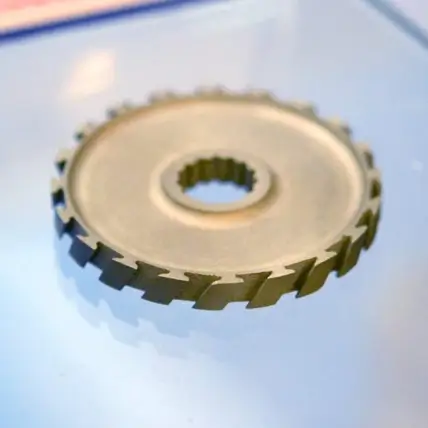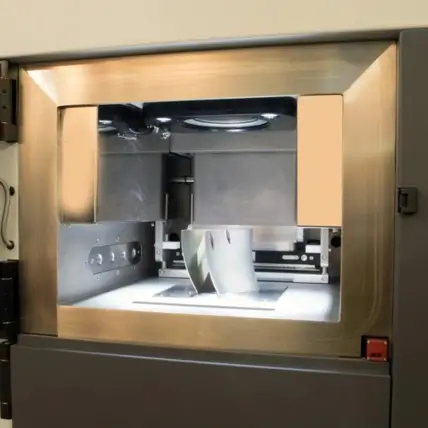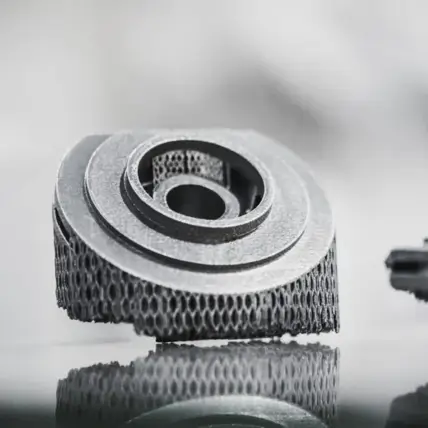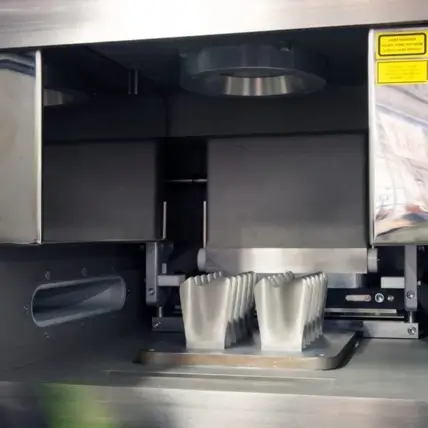Rapid Axis for DMLS Printing
Rapid Axis provides competitively priced, quality parts; quickly. We provide quicker speed to market within your product design lifecycle with quick turn and high quality DMLS components. With industry best customer service and a slew of SLM and EOS machines at our disposal, we can service even the most difficult DMLS requirement.




Why Rapid Axis is the best choice for DMLS
With project managers and operators who’ve supported DMLS since the early 2000’s we have a breadth of experience beyond that of normal DMLS service bureaus. With our unique equipment format and finish machining support there isn’t much Rapid Axis cannot do when it comes to DMLS. We support the most popular alloys on the market such as Stainless, Aluminum, Inconel and Titanium with ease.
Most popular materials in stock
Excellent post project support
Finishing and second operations supported
Technical
General Tolerances: +/-.005 for the first inch, +/-.003” for each inch after
Build Size: 280mm³
Finishing and 2nd Operations: Post op machining, hardware installation, bead blast, polishing and more
See Finishes page
Equipment: SLM & EOS
Materials: AlSi10mg, 17-4 SS, 316L SS, Inconel 625 & 718, CoCr, TiAl6V4
See Materials page
What is DMLS (Direct Metal Laser Sintering)?
Direct Metal Laser Sintering (DMLS) printing takes 3D printing beyond just plastic, resin, and rubber. This option allows you to print fully metal pieces, using legitimate metals like titanium, aluminum, and steels.
It works a lot like some 3D printers that you’re used to. A build tray is filled with metallic powder of your choosing. Above it, a mirror reflects the beam from a powerful laser.
The laser is so strong and concentrated that it physically sinters the metal powder together. It traces the outline of your part, one layer at a time. Once the layer is sintered from the laser, a fresh layer of metallic powder will be poured on top of the part. The laser zaps the next layer and molds it to the previous.
This process continues and the part slowly grows in height until the product is finished. Since the laser sinters every layer on top of one another, you’re left with a 3D metal part that doesn’t have a seam between layers. You can think of it like micro-welding without the obvious weld lines after.
The part goes into a curing oven for a certain amount of time. This gets rid of support material and heat treats the metal part. After that, you’re left with a solid, metal part.
Since DMLS printers offer the ability to print with metal, it’s much more versatile. It also means that you can directly compare the product to something from a CNC machine.
DMLS Printing Applications
Let’s take some time to explain the benefits and applications of DMLS-printed parts. You can compare these to other 3D printing methods or directly to CNC-machined parts.
Faster Fabrication
Compared to CNC machining, DMLS printing is significantly faster for complex components, by orders of magnitude. To machine a piece, a machinist needs to do a lot of hands-on work to prepare the project. This entails creating programs, sourcing raw material, and setting up the workholding.
With a DMLS part, it’s as simple as loading a flash drive and hitting “go”. There are little parameters that we’ll tweak based on a project, but the setup takes minutes instead of hours.
From there, the physical fabrication is much faster.
In the past, we’ve seen turnaround times as low as a day with DMLS parts. The same high complexity part might take days or weeks to fit into the CNC machine’s schedule and get made. This is all dependent on capacity of course!
Much Less Waste
We just hinted at this idea, but DMLS printers use a method called additive manufacturing. That means that the part is built from scratch using only the material needed to build the part.
The other method is subtractive manufacturing, which is how a CNC machine works. In this style, you start with a block of material and cut away all the material that you don’t want.
As a result, there’s very little waste when it comes to DMLS printing. From a material standpoint, it means that you’ll pay less for the material and each print has less of an impact on the environment due to this.
Strongest 3D Printing Option
Across the board, DMLS is hands-down the strongest option when it comes to 3D printers. Other printers are forced to use plastic, rubber, and different resins. This is the only option that can use pure metal to create a part.
Moreover, the final part’s material properties are identical to the metal used. In other words, if you use titanium powder for a DMLS part, then the final part will feel, move, and operate like a pure-titanium part that came off of a CNC mill.
This opens the door for different DMLS applications. You can install a 3D printed part into your industrial machinery, and it will blend in with the other parts. The only difference is that you got that part much faster and paid much less for it.
When we tell our customers that 3D printing is the new generation of manufacturing, this is exactly what we’re talking about.
As long as the part is correctly designed, you can make load-bearing DMLS parts that get used in high-force applications. The part will operate just like a part that was made through traditional CNC machining.
